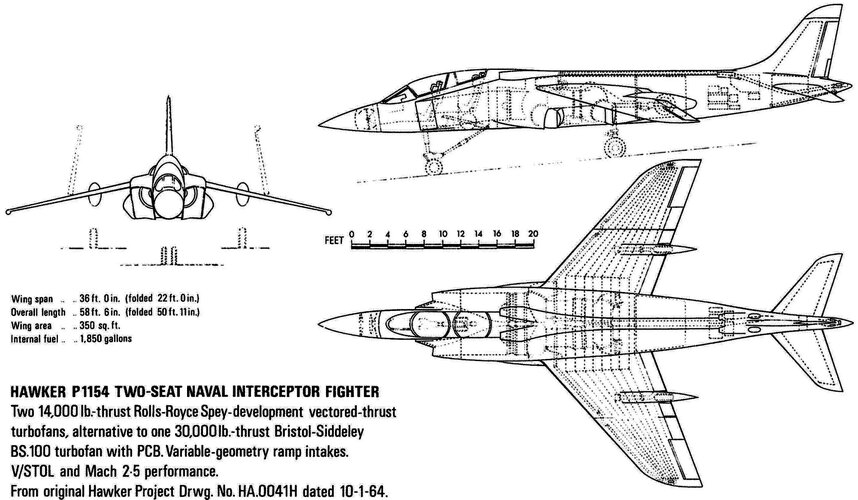Part of Post 344.
Don't panic, I trust you!
Thank you.
Something that I didn't put into Post 320 was.
[The] USA offered [an] offset package for [the] Phantom purchase, but HMG did not entertain [the] offer, but later negotiated some offset for F111K.
As far as I know there was no offset package on the C-130K, or the order for 15 CH-47A Chinooks that was cancelled or the planned purchase of C-5A Galaxies that was cancelled before any aircraft were ordered.
I did read elsewhere that the US Government offered to buy some VC.10s for the USAF and here or on Alternatehistory.com that the Spey-Corsair II was part of an offset deal and so was the Saudi arms deal of the 1960s, although the latter is disputed.
Another thing that I didn't include in earlier posts is that either the Key Publishing book on British Phantoms or the Ian Allan book on RAF Phantoms says that 40-45% of the content of the Spey-Phantom was British. I think it said 45% of the F-4K and 43% of the F-4M because I haven't checked. What 40-45% it didn't say, it could be the percentage of the value (which would be of the most use to us), the weight or the structure including engines and avionics.
If the above is true HMG not negotiating the maximum
"buy back" for Phantom (MOTS or Spey) and the other American aircraft purchased in the 1960s was a huge mistake. It's also something that's easy to correct in alternative history, because it doesn't involve spending more money or using industrial resources that the UK may or may not have had.
However, it feels too good to be true. Did the USG compensate HMG for buying American in ways other than an offset package?
EDIT: 16.01.25.
It was the Key Publishing book on British Phantoms which said that 40-45% of the Spey Phantom was British built, but as this quote from Page 16 says I got the proportions for each version wrong.
Whilst based on the F-4K, the RAF’s F-4M lacked the naval-variant’s lengthened oleo, catapult hooks, slatted tailplane, aileron droop and hinged radar (only the nose-cone was hinged).
The Phantom was to be designated the FGR.2 in RAF service – referring to the aircraft’s role as an air-defence fighter, ground attack strike aircraft and tactical reconnaissance machine. Although it generally only needed to fulfil one of these functions at any given time the F-4M’s diverse capabilities required a more sophisticated equipment fit than its Naval cousin. An Inertial Navigation & Attack System (INAS) was produced by Ferranti and based upon the unit the RAF had specified for the ill-fated TSR-2. This operated alongside an AD470 HF radio that allowed over-the-horizon communication on low-level sorties and an EMI-designed reconnaissance pod – the latter housing up to five optical film cameras, infra-red linescan and sideways-looking airborne radar. It also had mapping and moving target indication capabilities.
Other changes included the addition of anti-skid brakes, provision for a centre-line mounted SUU-23 gun pod and a complete revision of avionics. Combined, these changes meant that 45% of F-4Ms were produced in the UK, compared to 40% of the Navy's F-4K.
And on Page 14 it says.
The cost and time savings compared to designing and creating aircraft from scratch was considered worthwhile but the loss of British jobs and export potential would be immense. To placate the ailing aviation industry the government negotiated for British companies to produce up to 40% of each Phantom under licence. In practice this mostly meant producing small items but the British Aircraft Corporation (BAC) at Warton, Lancashire was awarded the contract for producing the F-4 rear fuselages (normally built for McDonnell Douglas by Fairchild), Shorts at Belfast manufactured the outer wing sections and Ferranti licence-produced the AN/AWG-10 radar.
So does that mean 40% of the airframe and avionics?
And on Page 15 it says.
All of the work took so much money and time that the supposedly cheap ‘off-the-shelf’ order turned into a protracted and expensive procurement. Whilst a laudable policy, the outcome of ‘anglicising’ the Phantom was an aircraft some three times the flyaway the price of the US Navy’s F-4J and – as time would tell – having a poorer performance in most areas.
Which is what Derek Wood said in the quotes from
"Project Cancelled" in Post 353.
The next paragraph on Page 15 says,
The F-4M airframes destined for the RAF did not need such modifications. In fact the RAF would have been content with a standard F-4 and even viewed the change to Spey engines as completely unnecessary. As they correctly surmised, the changes consumed up valuable time and money that could have been used to finance extra aircraft.
Except, the same book says it had even more modifications than the F-4K and 45% of it was British instead of 40% for the F-4K. See the quote from Page 14.

